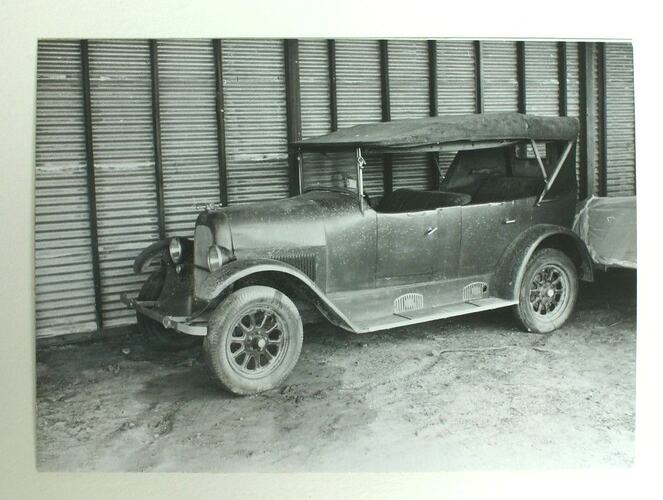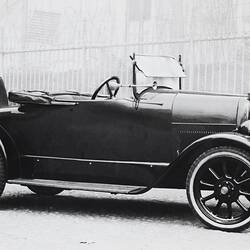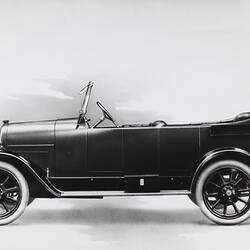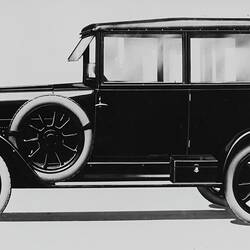The Fiat motor company, named from the acronym Fabbrica Italiana Automobili Torino, was originally founded by Giovanni Agnelli in 1899 and during the First World War was involved in the manufacture of tanks, trucks, aero engines and aircraft. The 501 was their first new model car released after the war.
Australia was one of the strongest export markets for Fiat products. Prior to the First World War, Fiat cars had been imported into Victoria by Tarrant Motors Pty Ltd. In the 1920s sales of the Fiat 702 tractor and the 501 motor car were based on a reputation for reliability. Production of the 501 began in 1919 and ceased in 1926 after about 46,000 had been sold worldwide, a large production run by European standards. The designer was Carlo Cavalli. Export sales were vital in keeping Fiat in business during the interwar years. Sales of the 501 were hindered in Australia by the 'Imperial Preference' import duty which was higher for goods not made in the British Empire. Even at a higher price the Fiat 501 was apparently considered good value due to its larger size compared with smaller, less robust British cars of the period. American cars sold well in Australia for the same reason but had an advantage compared to the Fiat as they could be imported from Canadian factories to benefit from the Imperial Preference. Like most cars from this period, the chassis and engine were imported and the body was locally made, in this case showing a strong American design influence.
One of the largest producers of bodies for the Fiat 501 was Holden's Motor Body Builders Ltd which produced bodies for a wide variety of imported vehicles until 1931 when the firm was taken over by General Motors to form General Motors-Holden's Ltd (GM-H). Holden body options for the 501 included several variations of the 'Standard' four door open tourer body and a 'Sports Model' two door roadster with folding roof. From about 1920 Fiat motor cars were distributed in Victoria by Autocar Industries Pty Ltd also known as the A.I Company at 104-112 Russell Street Melbourne, (formerly trading as Tarrant Motors Pty Ltd). Autocar Industries also made bodies for imported cars and advertised its own closed body for the Fiat 501. The last of their stock of new Fiat 501 vehicles was advertised in May 1927 to coincide with the Melbourne Motor Show.
The 501's 1.5-litre, four cylinder engine was smooth but performance was modest as this side-valve unit delivered about 27 horsepower with a top speed of only 45 miles per hour (72 km/h). This was just as well because all-wheel brakes were only provided from 1924 which was not unusual for a car at this time. Prior to this, only rear wheel braking was available. The gearshift lever was positioned to the right of the steering wheel.
More Information
-
Keywords
-
Localities
-
Authors
-
Article types




